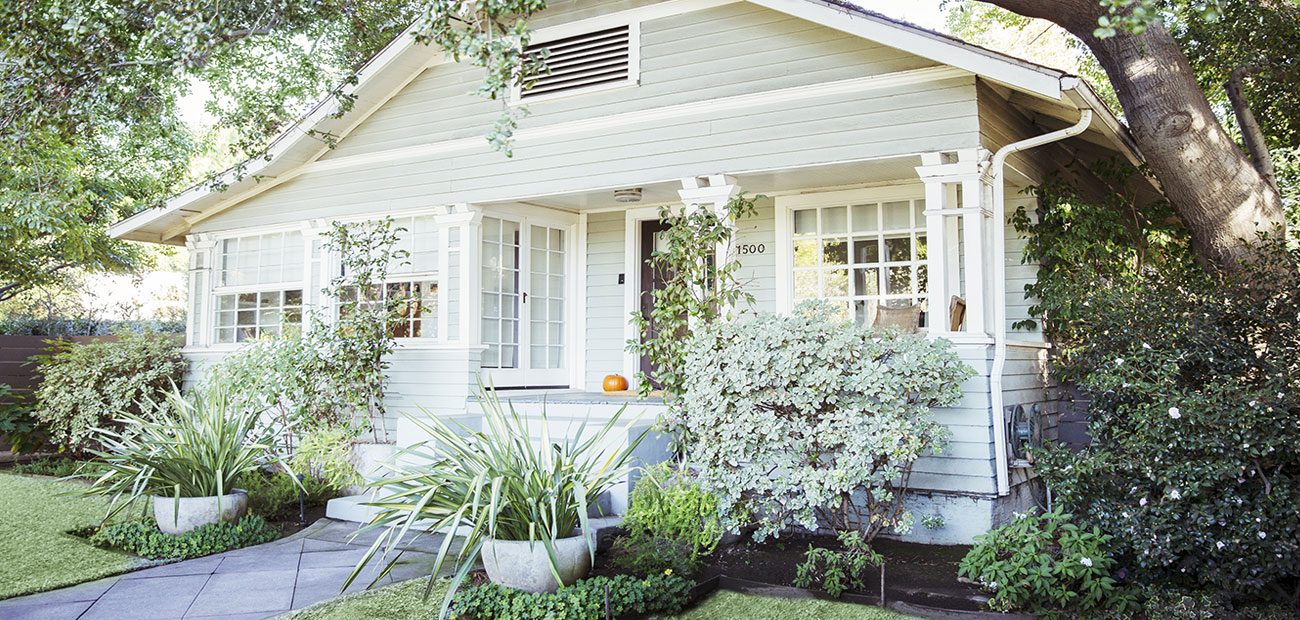How to Market a House Without a Garage
Garages haven’t always been part of the American home. In fact, it wasn’t until Ford Motor Co. started mass-producing the Model T in 1913 that small detached sheds were built on properties that had enough land to protect these new contraptions, according to Scott Sidler, licensed contractor and author of The Craftsman Blog. As the size and number of cars increased, so did the sheds. Eventually, these structures were integrated into the home-construction process, in part to make access easier.
In the 1980s, garages grew larger to keep in scale with emerging McMansions. Some were finished with heating, painted floors, windows, and storage. And in the most extreme cases, they were converted into living space, which meant cars again had to be parked elsewhere.
Now demand for a garage is decreasing with an emphasis on dense infill developments, walkable neighborhoods, and more car- and ride-sharing options. Chicago sales representative Jennifer Ames Lazarre with Coldwell Residential Brokerage recently listed and sold two high-end city homes without garages, each priced over $2 million.
Other priorities will sometimes trump demand, too. Recent research from realtor.com® pointed out that for parents of school-age children, high-performing educational institutions win out over a garage.
However, it’s still rare to find buyers who completely eschew them, though the data is scant. A recent poll conducted by Houzz found that only one in 10 respondents said they don’t need a garage. A few years earlier, the National Association of REALTORS®’ 2013 Home Features Survey found that 78 percent of homeowners had a garage and that the feature is more popular among buyers of new homes and suburban and Midwestern homeowners.
Sales associate Katie Horch, ABR, SFR, with Keller Williams Realty in Medford, N.J., thinks the importance of a garage depends on an area’s inventory and buyer motivation. “Some are fine without it,” she says. Others “don’t even use it for their cars but as a space to store things.”
On the flip side, there are plenty of buyers who will avoid a listing without a garage, even if the location, price, and everything else about the house meets their approval. “They think, ‘Uh oh, no garage’ and move it to the bottom or off their list,” says Libbe Pavony, a real estate salesperson with Houlihan Lawrence in suburban Briarcliff Manor, N.Y.
Real estate salesperson Steve Kempton with RE/MAX Community in Williamstown, N.J., is still looking for a buyer for a house he listed more than 70 days ago that has a garage that was converted to a recreation room. “It’s hard even to get buyers in. But there’s not much we can do since the seller feels the garage is an improvement rather than deterrent and doesn’t want to convert it back,” he says.
Similarly, Jennifer Roach, salesperson with Premier Sotheby’s International Realty in Sarasota, Fla., has a $1.2 million listing in her city’s historic district that she says probably hasn’t sold because its detached garage was converted to a guest cottage. The house has been listed since the end of March. She cautions homeowners that such an improvement represents a “gamble.”
Whether you’re selling a historic home that never had a garage, one on a tight lot where there isn’t room, or one where the space has been converted, you can use a multistep marketing approach to help widen the buyer pool. Here’s how to proceed:
Study the neighborhood to find out how prevalent garages are. In areas where garages are less common, salespeople can play up that fact. Few homes in the two historic areas near downtown Salem, Mass., have garages, and most lots are too small to build them, says Ryan Guilmartin, SRS, salesman with Keller Williams Realty in nearby Beverly. “About 95 percent of the houses don’t have garages, and the few that do are much more expensive, so we emphasize the savings,” he says.
In Albuquerque, N.M., the small houses in the walkable downtown area were built in the 1920s. Often, the original one-car garages have been converted to living space through the intervening years, says Jessica Beecher, owner of RE/MAX Select in Albuquerque. She says buyers familiar with this neighborhood, or urban areas in general, are typically not bothered by the situation. “For many relocating from bigger, not more expensive, cities, it’s usually not an issue since many are accustomed to not having a garage and parking on a street or paying for a parking garage,” she says. However, buyers not familiar with this part of town are disheartened by the difficult search for even a one-car garage. Beecher says they usually end up buying in another neighborhood where they can find a house with an attached two-car garage.
Price the listing competitively. Be sure to compare apples to apples—if you look at comparable houses without garages, you’ll get a lower listing price and appraised value than those with garages. How much less depends on the importance of this feature in the area. In Roach’s Sarasota neighborhood, most homes are built with garages since buyers want to protect their cars from the sun and oxidizing salt, have a place to store their beach gear, and protect their possessions from vandals if they head north for an extended period. Therefore, she says the absence of a garage can decrease the appraised value by as much as 20 percent. But those who’ve been priced out of certain neighborhoods may find the savings appealing.
Read the full article here at Realtors Magazine.
